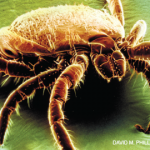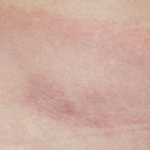There are rare cases in which Lyme arthritis seems to be resistant to repeated courses of antibiotics, but here again, research (much of which has come from Dr. Allen Steere’s observations—he has published more than 50 papers on the subject) has begun to clarify the basic question: Is this persistent infection or has the Lyme spirochete triggered a form of reactive arthritis? Reactive arthritis is similar to a hit-and-run accident. The patient’s own immune system may react with the infection in such a way that it clears the infection but doesn’t down-regulate. That is, the system remains turned on, and cells that are activated continue to secrete inflammatory proteins long after the infection is gone.
In some cases of persistent Lyme arthritis, a similar hyper-immune process may be in play. The spirochete can no longer be cultured from inflamed fluid. Antibodies directed against the organism gradually diminish even as inflammation persists. And certain genes, particularly those recognized as risk factors for rheumatoid arthritis, are often present in these patients, suggesting that immunologically driven Lyme arthritis shares certain risk factors for rheumatoid arthritis.
How is this variant of Lyme arthritis managed? Not with further antibiotics. Instead, medications such as methotrexate, which down-regulates inflammation, are usually successful when antibiotics have clearly failed.
The good news: Unlike such diseases as rheumatoid arthritis, which requires lifelong treatment, reactive arthritis associated with Lyme arthritis usually burns out, and medications can eventually be discontinued.
Where the waters are murkier is the sub-group of patients who present with a typical Lyme disease manifestation—perhaps Bell’s palsy, weakness of the muscles on half or both sides of the face; a heart rhythm abnormality; or arthritis—and undergo appropriate antibiotic treatment, but have not fully recovered. The physical manifestations of the disease and laboratory markers of inflammation, such as a sedimentation rate or C-reactive protein, normalize, but subjective symptoms, such as muscle or joint aches, fatigue, headaches and decreased endurance, persist. Patients may have difficulty with concentration or experience tingly sensations in the extremities. These post-Lyme symptoms are extraordinarily frustrating to both the patient and treating physician, and management is difficult. Because it is nearly impossible to prove that low-level infection is not completely cleared, repeated courses of antibiotics are often administered.
There is some guidance from five published trials in this subgroup.1-5 Patients with persistent symptoms in the trials were assigned to receive IV ceftriaxone followed by an additional course of oral doxycycline or placebo. The duration of IV ceftriaxone and oral antibiotics varied between the trials. In one of the studies, the IV ceftriaxone group experienced a small, but statistically significant, improvement in disabling fatigue, but this did not translate into measurable improvement in cognitive function. The other trials did not demonstrate any difference between the placebo and antibiotic groups.


